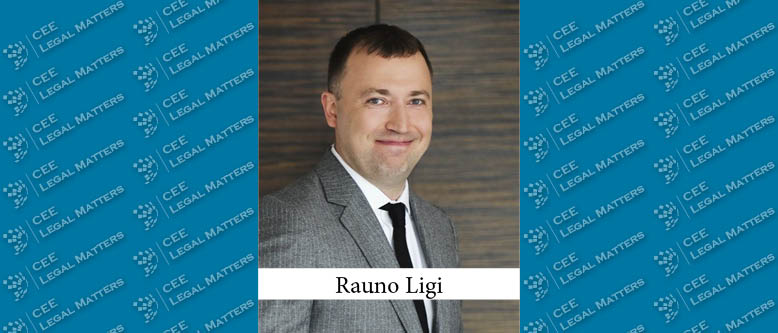With the fast-paced development of applications in nearly every sector of the service industry and the advent of virtual services, Romania witnessed a rise in the number of people employed in the gig economy. CEE Legal Matters sat down with DLA Piper Head of Employment Monica Georgiadis and Schoenherr Head of Employment Mara Moga-Paler in Romania to discuss the legislative framework regulating gig workers, the labor risks and challenges they face, and the ways in which these might be addressed.
Big and Getting Bigger
The gig economy in Romania is relatively advanced, compared to other CEE jurisdictions, according to Moga-Paler and Georgiadis. “Before the COVID-19 pandemic, Romania was ranking high among regional countries in this respect,” says Moga-Paler, noting that Romanian IT freelancers’ activity on international markets was especially high and constantly growing, ever since the mid-2000s. On top of that, “the pandemic gave a boost to the gig economy in the entire region, and Romania saw a growing number of platform workers in all areas,” she adds.
“The pandemic and recent regional context have definitely accelerated the process,” Georgiadis agrees, noting that “what differentiates Romania from other CEE jurisdictions is its much sought-after IT talent.” After all, she says, “Romania had been dubbed the EU’s Silicon Valley as early as 2018.” According to her, the main two parts of the gig economy, that is, peer-to-peer in-person services, such as delivery, ride-hailing, etc., and virtual services have seen significant growth in the recent period.
Lagging Labor Legislation
Moga-Paler and Georgiadis believe that, taking into account the fast-paced development of the gig economy, the legislation has not been keeping up. “In 2019, specific legislation was enacted to regulate the ride-hailing sectors, however, there was no general legislative response to the gig economy boom,” says Moga-Paler, noting that labor authorities are “still making use of the traditional assessment tools to distinguish between employment and independent relationships.”
“Romanian legislation, like in other EU countries, lags behind the rapidly moving gig economy,” Georgiadis adds, saying that Romania’s “labor legislation is quite restrictive and slowly updated, being one step behind the business and practical needs.” At the same time, she considers the ride-hailing legislation a positive development. There was “the practical need to deal with a newly emerging reality – in absence of any regulation, ride-hailing host applications risked being challenged under obsolete legislation.” In addition, Georgiadis highlights another positive development – though not directly linked to the gig economy – “the Romanian employment law on teleworking, in force since 2018 and updated in 2021, to reflect changes in the pandemic context.”
Running the Risks
In the absence of specific legislation, Moga-Paler and Georgiadis highlight the existing challenges, from a labor perspective. While acknowledging the benefits with regard to customer service and experience, Georgiadis says that the gig economy “also paves the way for several challenges in the traditional employment framework.” Moga-Paler agrees, pointing out that “unless new legislation is adopted that would address the specificities of the gig economy, gig workers will continue to be subject to the same assessment criteria as the employees on the black market who are working without any type of contract.”
Georgiadis outlines the inherent risks for misclassification of gig workers’ employment relationships. “The misclassification-related risks can take the form of undeclared work, i.e., no documentation or no employment documentation despite an employment relationship, or, more recently, underdeclared work, where there is an employment agreement in place, but the salary level is set at a lower than the actual level/the minimum wage level, not reflecting reality.” According to her, “for example, if the gig-worker receives instructions and directives from the employer and has little to no freedom in choosing how and when to perform the activity, that would mean they are used to replace an employee covering substantially similar activities.” In this context, Georgiadis says, if a services agreement is used where an employment agreement would be more appropriate, the employer faces a misclassification or undeclared work risk.”
If labor inspectors reclassify a relationship into employment, the beneficiary may be sanctioned for undocumented employment, according to Moga-Paler. “This represents a minor offense and is sanctioned with a fine of RON 20,000 (about EUR 4,000) for each individual working without an employment agreement.” Romanian labor legislation “does not set clear criteria to define an employment relationship,” she explains. “Labor inspectors have the authority to classify a relationship as employment, and this is based on criteria that are neither transparent nor predictable.” According to her, “the gig-worker who provides the services may in their turn also be sanctioned with a fine of up to RON 1,000 (about EUR 200).”
Moga-Paler and Georgiadis point out that the existing legal status for gig-workers varies between authorized persons and limited liability companies, which does not seem to be sufficient to avoid the misclassification risks. “Although LLCs may seem more suitable and less risk-prone, in fact, their activities are scrutinized by authorities similarly to those of authorized individuals, especially when the sole shareholder of the LLC is also the person who actually provides the services,” Moga-Paler explains.
“There is no generally applicable answer to this,” Georgiadis agrees, pointing out that it is always an assessment of substance – what the relationship looks like and how the activity is performed – over form, as in what type of corporate vehicle is used. According to her, “there are also practical aspects to be considered – from the accounting system applied to the frequency of submitting tax returns.” As a general rule, she says, “if the individual is providing the activity themself, using a company to do so (where the individual is the sole shareholder and also director) is not necessarily sufficient to entirely avoid the misclassification risk.”
In addition, Georgiadis points out that, in the absence of regulations, such arrangements pose threats to employers as well. For example, she says, it would be crucial “to ensure that employers also have the right tools to check potential breaches of their working schedules and fidelity / in-employment non-competition rules.”
Swift yet Balanced Response Needed
Looking to the future, Moga-Paler and Georgiadis believe that issues such as employment classification criteria and employee rights – in terms of annual leave, minimum salary, and working time – need to be addressed, and quickly. This, according to Georgiadis, could much more efficiently be facilitated at the EU level. “EU law is slowly catching up with the developments and adjustments. To that timeline, one can add the expected delayed implementation of such directives in Romania. Which is not necessarily just a Romanian issue, but a broader issue at the CEE level,” she says.
In addition, Georgiadis highlights the need for comprehensive legislation, also taking into account the challenges of the employer. “As we look forward to the upcoming legislation to address these complexities, we also hold hope it will strike the right balance between securing a realistic level of protection for digital platform workers and the prevention of any foreseeable abuse of rights from their side,” she concludes.
This Article was originally published in Issue 9.4 of the CEE Legal Matters Magazine. If you would like to receive a hard copy of the magazine, you can subscribe here.
















